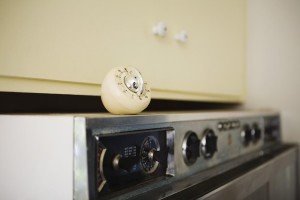How to Clean All Types of Electric and Gas Ovens
No matter how careful you are, at some point, a meal will boil over onto the bottom of the oven. What to do? You can’t stop and wipe up the spill given the risk of burning yourself, so you’re forced to stand by and wait as the oven cools down. Meanwhile, the spill burns on. At that point, you can assess the damage and start to clean it up.
Know Your Oven Type
How to Clean All Types of Electric and Gas Ovens
Determine if your oven is a self-cleaning model, a textured model or a regular non-self-cleaning oven. Always follow manufacturer’s instructions for maintaining your oven.
Self-Cleaning Ovens Convection or Conventional
Run the self-cleaning cycle for your oven as often as you need to. It reduces nearly any spill to a powdery gray pile of ash that can easily be wiped away at the end of the oven’s cleaning cycle. Just use a damp cloth to remove the ashy residue. Make sure you have a window open during the process to help keep smoke from sticking to the ceiling and walls. You may need to wash down the oven door and frame with a gentle dish soap to remove soil residue. Don’t scrub the rubber gasket that seals the oven door; just rinse it with dish soap and then water. Don’t use abrasives or oven cleaners on the interior of the oven. For self-cleaning ovens, consider removing plastic knobs for the duration of the cycle to avoid warped or melted plastic knobs once the oven is finished cleaning itself.
Textured ovens are sometimes called continuous cleaning ovens. They have a special surface that has a rough porcelain layer that is supposed to burn off food gradually as you continue to use your oven. To clean this type of oven, you only need to wipe down the inside with a damp cloth when your oven is cool.
Each time the oven cools off, wipe up any spills with a hot, wet cloth. If you do this each time, food will not build up or burn onto the oven surfaces. Some people prefer to cover the bottom of the oven with aluminum foil, but you’ll need to make sure that no vents are blocked if you choose this prevention trick. For really stubborn stains or buildup, you’ll need an oven cleaner and a plastic scrubbing pad or brush. Make sure you use good ventilation when using an oven cleaner. You can also use baking soda on regular non-self-cleaning ovens as a gentle abrasive that also soaks up grease and oily stains.
Steam Cleaning Oven Models
Materials to Clean an Oven
- Damp microfiber clothes
- Mild detergents
- Non-self cleaning only: oven cleaner
- Non-self cleaning only: aluminum foil (optional)
- Non-self cleaning only: plastic scrub brush or pad


